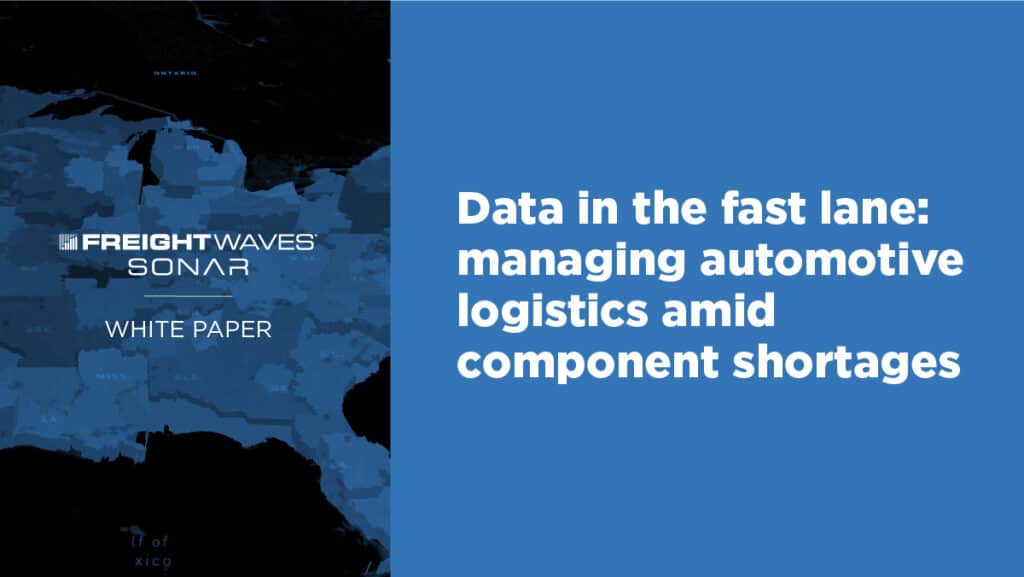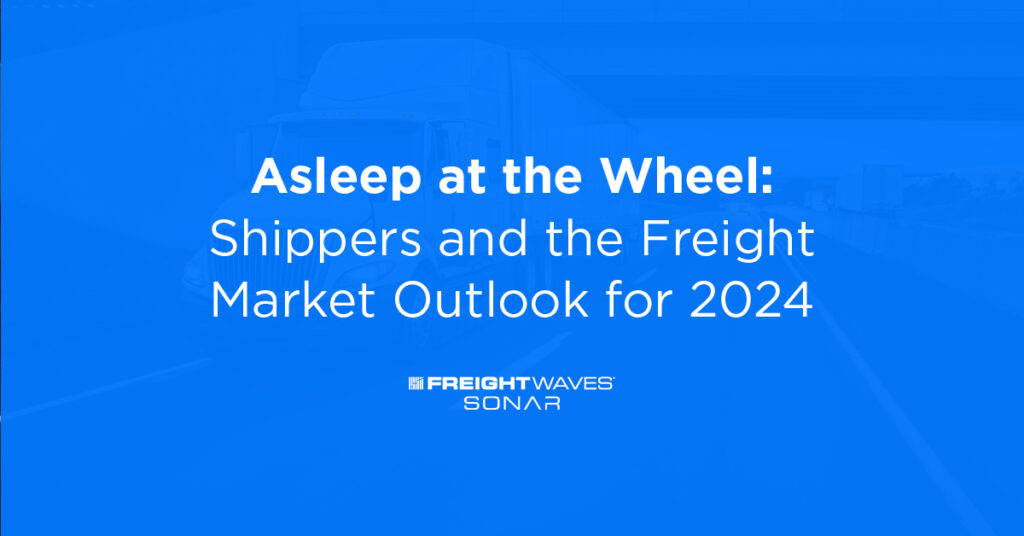The global semiconductor shortage seems to be the first, second, third and only issue in the auto industry right now. Maybe that’s not exactly true – there are also issues related to the semiconductor shortage, such as record used vehicle prices, consumers buying early in order to get their desired vehicles, and vows to ditch just-in-time inventory management. In addition, there is investor excitement surrounding electric vehicle (EV) growth rates – and even the legacy companies are getting in on the action by dramatically ramping up their investments in EVs.
Less headline-grabbing is the blocking and tackling of efficiently managing freight spend in the context of highly global automotive supply chains.
In this report, we cover numerous datasets available through FreightWaves and the SONAR platform that can help automotive OEMs and automotive suppliers manage their transportation networks.
Those data sets and use cases include:
Freight market data to assist in negotiations with carriers. (Pages 2-4) For example, SONAR data show that the freight market for inbound Detroit loads is highly volatile based on auto production trends – inbound Detroit loads should be less expensive when OEMs are sourcing a lot of components as assembly volumes ramp up. Conversely, it is easier for auto companies to source components into Detroit at lower freight rates when production levels decline.
Detailed containerized rail data helps to determine the best freight corridors to use rail intermodal to lower freight costs. (Pages 5-6) Auto companies should focus on intermodal corridors with existing density, which includes north-south cross-border shipments in 53’ containers as auto parts are taken south to the Mexican assembly plants. Meanwhile, eastbound lanes from Vancouver represent the densest international intermodal corridor for auto parts.
Contract freight rate data that is specific to the auto industry can be accessed using SONAR Supply Chain Intelligence (SCI). (Pages 7-8) SCI helps shippers to quantify the benefits of converting freight from truckload to intermodal in particular lanes. Plus, it allows shippers to see how their rates compare to the market. Knowing how rates stack up helps shippers to lower freight costs through more effective negotiation and also helps to improve carrier compliance for the most important shipments. In this report, we analyze an auto company’s shipments in two lanes – one where their freight rates are below-market and one where they are above the market in a lane that is generally more challenging for shippers.
Canadian National Railway’s pending acquisition of Kansas City Southern will likely improve the efficiency of auto supply chains. (Page 9) The deal would extend the combined railway’s reach to additional geographies and would likely lead to additional railway investment in north-south corridors linking major automotive markets.






